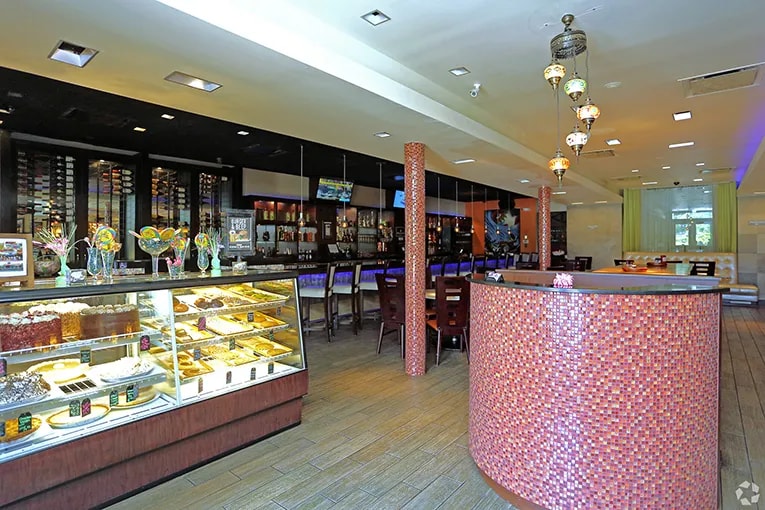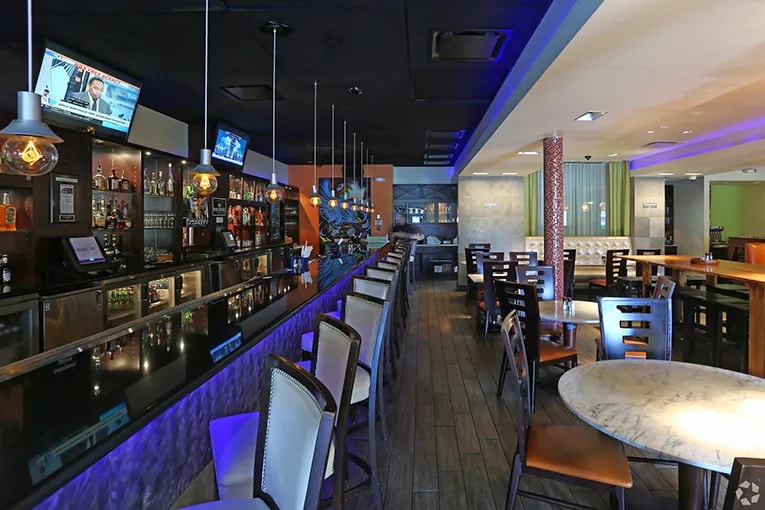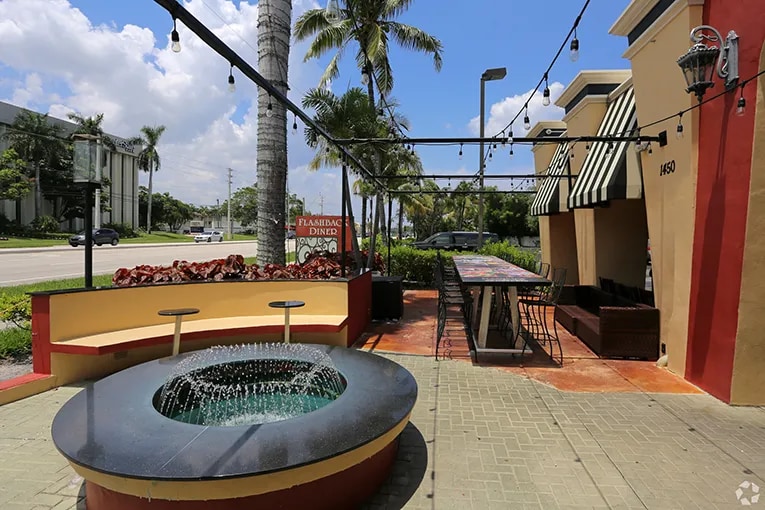How to Buy a Restaurant: A Guide for Investors

Buying a restaurant offers investors unique advantages, from steady income streams to asset appreciation. With potential for growth, restaurants can suit a range of investment goals, depending on the type of restaurant chosen. Different types of restaurants offer distinct opportunities and considerations, from fast food to fine dining. Investors may opt for active ownership or pursue a more passive investment in fast food chains depending on their involvement preference. It's also important to decide whether to purchase only the property or acquire the entire business.
Pre-Purchase Analysis
A successful restaurant acquisition starts with a clear understanding of its value. Valuation methods for restaurants can vary, but three core approaches are commonly used:
- Rule of thumb multipliers - Often based on industry standards, these multipliers estimate value by applying a set ratio to a restaurant's gross sales or cash flow. While useful, multipliers alone don't account for specific costs or market conditions.
- Asset-based valuation - This method evaluates the total worth of a restaurant's physical assets-such as equipment, furnishings, and leasehold improvements-often helpful in cases where assets have substantial value relative to earnings.
- Cash flow analysis - Cash flow analysis considers the net income generated by the restaurant and is a critical component of understanding investment potential. Many investors use tools like a commercial real estate appraisal to assess a restaurant's market value.
Investors can further refine their understanding of value with resources like a commercial property value estimator to gain a comprehensive overview of potential returns. Additionally, using a cap rate calculator can clarify the investment's projected return relative to its purchase price, while metrics like cash on cash return offer insight into annual profitability.
Risk Assessment
Beyond valuation, a thorough risk assessment is essential. Factors like location stability, local competition, and economic trends shape a restaurant's risk profile. Return on investment (ROI) calculations can further refine expected performance, with investment models varying widely by restaurant type and concept. For example, valuation approaches may differ between fast-casual and fine-dining establishments, given differences in scale, market positioning, and potential for expansion.
Finally, modern valuation also considers tech-driven elements, such as a restaurant's integration with delivery platforms, which can impact long-term growth potential. As brand visibility in digital spaces grows, assessing a restaurant's brand equity becomes key to understanding its future performance.
Strategic Due Diligence (Beyond Basic Financials)

While financials provide a snapshot of a restaurant's current performance, strategic due diligence uncovers the broader factors that influence long-term success.
Location Value Analysis
A restaurant's location impacts not only its daily foot traffic but also its potential for growth. Assessing location involves examining demographic shifts, which indicate if the area's population aligns with the restaurant's target audience. Understanding development plans around the property helps gauge future competition or opportunities. Additionally, analyzing traffic patterns and walk score can provide insight into peak hours, customer access, and parking needs, all of which affect a restaurant's viability.
Brand Equity Assessment
A restaurant's brand equity reflects its reputation and customer loyalty, often critical drivers of profitability. Assessing brand equity involves looking at the restaurant's market positioning and how well it resonates with local clientele. High brand equity can increase customer retention and provide a foundation for future expansion.
Digital Presence Evaluation
In today's digital era, a restaurant's online presence significantly influences customer acquisition. Evaluate the restaurant's website quality, social media engagement, and online reviews. A strong digital presence can serve as an asset in expanding reach and capturing new business.
Delivery Radius Analysis
Understanding the delivery radius is crucial, especially for restaurants heavily reliant on delivery platforms. Analyzing the reach and efficiency of this radius can reveal growth opportunities or limitations. For many investors, a strategic approach to commercial real estate investment includes assessing whether the restaurant's location supports sustainable delivery operations.
Strategic due diligence provides a holistic view of the restaurant's market position and potential. Going beyond financials in these areas can reveal hidden strengths-or challenges-that impact long-term investment success.
Critical Financial Metrics

Evaluating a restaurant's financial metrics is essential for investors looking to ensure operational stability and profitability. Key performance indicators (KPIs) provide insight into a restaurant's cost structure and revenue potential, helping investors make informed decisions.
Key Performance Indicators (KPIs)
- Prime cost targets - Prime costs, the combined total of food and labor expenses, are one of the most critical benchmarks for restaurant profitability. Maintaining prime costs within a targeted percentage of total sales helps control overhead and improves margins.
- Labor cost ratios - Labor costs can significantly impact a restaurant's bottom line. Investors should evaluate labor cost ratios relative to industry standards, as well as how effectively the restaurant manages scheduling, wages, and employee productivity.
- Food cost percentages - Food costs, measured as a percentage of sales, reveal how efficiently a restaurant sources and manages inventory. Consistent tracking of this metric helps maintain profitability and prevent waste.
- Key real estate metrics - Beyond operational KPIs, real estate metrics offer crucial insights into the investment's underlying property value and financing requirements. For example, using an NOI calculator can help assess operational performance by determining the net operating income (NOI), a key indicator of a property's profitability. Metrics like the debt service coverage ratio (DSCR) are important for loan qualification, indicating whether the restaurant generates enough income to cover its debt obligations. Additionally, the gross rent multiplier (GRM) helps assess a property's valuation by comparing its price to its rental income.
Hidden Costs and Liabilities
Identifying hidden costs and liabilities is crucial, as unexpected expenses can quickly erode profitability. Investigate any deferred maintenance, outstanding debts, or tax obligations that may impact cash flow post-purchase.
Working Capital Requirements
Restaurants typically need a buffer of working capital to cover short-term operational needs. This capital can provide flexibility in managing inventory, covering payroll, and handling seasonal fluctuations in revenue.
CapEx Planning
Capital expenditure (CapEx) planning ensures the property remains competitive and operational. Investors should estimate repair and improvement costs, especially for critical equipment or potential renovations, to understand future cash flow requirements.
Commercial Kitchen Costs
Build-out expenses are another major consideration. Calculating the commercial kitchen cost per square foot helps investors estimate upfront costs for necessary renovations or equipment upgrades, aiding in overall CapEx planning.
Accurate financial metrics are foundational to evaluating restaurant investment opportunities. A thorough review of these metrics allows investors to pinpoint both potential and risk, helping inform a successful acquisition.
Future Growth Potential Evaluation

Evaluating a restaurant's growth potential goes beyond immediate financial performance. Assessing various expansion opportunities and adaptability factors provides insight into long-term value.
Market Expansion Opportunities
Identifying potential for market expansion is essential for maximizing a restaurant's growth. This could mean exploring additional locations in underserved areas, adjusting the menu to attract different demographics, or expanding your restaurant to multiple locations to build a larger customer base. Each approach should be considered carefully, as it impacts scalability and brand reach.
Ghost Kitchen Potential
The rise of delivery-only kitchens, known as ghost kitchens, presents an alternative business model that many restaurant owners are now adopting. Ghost kitchens eliminate the need for a traditional storefront, allowing operators to focus solely on delivery, often at a lower operating cost. If this model aligns with your business goals, consider the ghost kitchen option as a flexible addition to or replacement for traditional dining. Evaluating the potential of a ghost kitchen model versus a brick-and-mortar restaurant can be a game changer in today's foodservice industry.
Multiple Revenue Stream Analysis
Restaurants with diversified revenue streams are often better positioned for sustained growth. Beyond dine-in services, options such as catering, meal kits, branded products, and digital cooking classes can broaden income sources. Adding these revenue streams creates resilience, helping stabilize income during seasonal fluctuations or economic downturns.
Property Development Options
Owning the property opens up development possibilities beyond the current restaurant use. Consider if there is potential for expansion, whether through additional seating areas, outdoor spaces, or even the development of multi-purpose sections within the property. Strategic property development can increase asset value and drive higher returns over time.
Post-Acquisition Strategy

The first 90 days after purchasing a restaurant are pivotal for setting up long-term success. Begin with a clear plan that prioritizes systems optimization to streamline operations and reduce costs. Focus on staff retention strategies to maintain continuity and morale, especially if the restaurant has an established team. Consider the balance between brand preservation and rebranding, depending on customer perception and your vision for the business. Finally, create a performance improvement roadmap to monitor and drive progress in key areas like customer satisfaction, revenue, and operational efficiency.
Closing Thoughts
Investing in a restaurant requires both a clear timeline and a solid exit strategy. Set realistic expectations for returns, as restaurant investments often need time to mature. Begin with clear action steps: conduct thorough research, secure financing, and follow a structured post-acquisition plan to optimize your investment. For a flexible exit strategy, consider options like a sale leaseback, which allows you to sell the property while retaining operational control.
Ready to take the next step? Explore restaurant properties for sale if you're interested in buying a standalone property, or check out restaurants and food businesses for sale to invest in a full business operation. Whether you're starting small or planning a major acquisition, the right preparation can lead to a rewarding investment in the restaurant industry.
Restaurant Properties For Sale
This article was updated on 12/13/2024
